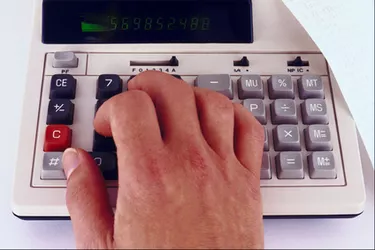
When you borrow money, lenders charge you interest on the loan. When you lend money, borrowers pay you interest. For example, if you buy a bond issued by a company or open a certificate of deposit with a bank, you are paid interest for the use of your money. Many bonds and some certificates of deposit pay interest on a semiannual basis. To calculate the interest that will accrue semiannually, you need to know the interest rate and the amount in the account.
Step 1
Divide the annual interest rate by 2 to calculate the semiannual rate. For example, if the annual interest rate equals 9.2 percent, you would divide 9.2 by 2 to find the semiannual rate to be 4.6 percent.
Video of the Day
Step 2
Divide the semiannual interest rate by 100 to covert it from a percentage to a decimal. In this example, you would divide 4.6 percent by 100 to get 0.046.
Step 3
Multiply the semiannual interest rate by the balance of the account. Finishing this example, if you have a certificate of deposit that pays interest semiannually and has an account balance of $800, you would multiply $800 by 0.046 to find you will earn $36.80 in interest.
Video of the Day